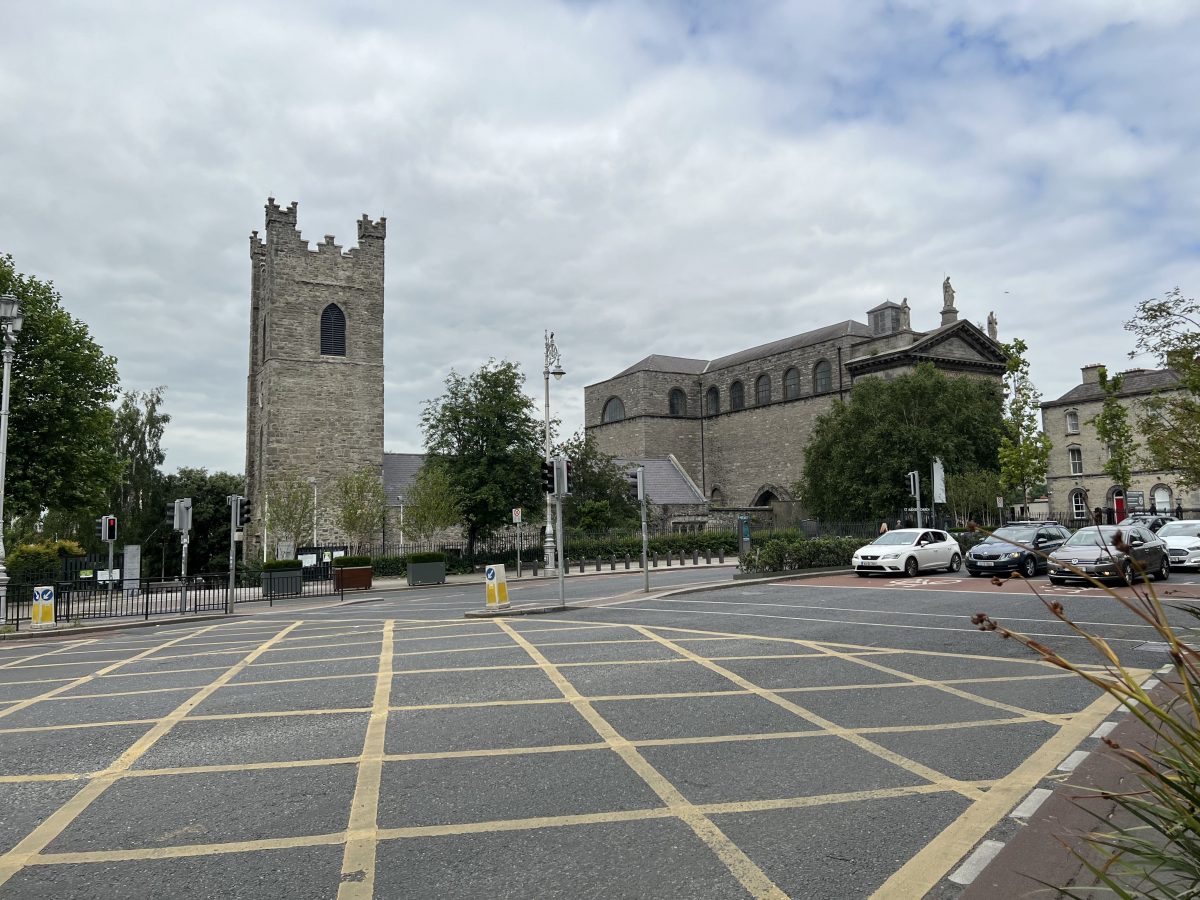The bus dropped us off near Trinity College. We had a couple of hours of leisure time. Then we would head to our hotel. I was really disappointed with the hotel. It was not in Dublin but in a business park outside the city centre. The bus had to leave at 4 to get to the hotel. As a result, I could not do any walking tours of Dublin.
I had booked a tour of the Guinness Storehouse and I decided to walk from the college to the tour. It was about 25 minutes. I thought about walking the famous Temple Bar area along the River Liffey. But time was limited so walked through The Liberties neighbourhood – dating back to the 12th century.

The Guinness tour is very popular and you should definitely book tickets in advance. It is a timed entrance – I lined up with the others for the 2 pm tour. It is self guided but they allow guided group tours. It opened as a tourist attraction in 2000 and has had over 20 million visitors.

The storehouse was built in 1902 and originally the fermentation plant where yeast was added to the process. There are seven floors of exhibits crowned by the rooftop glass bar. The bar gives a 360 degree view of Dublin and one of the main reasons I wanted to visit.

The designers took advantage of the darkness of the building, the stone and brick walls and contrasted with the lights of the exhibits. There are 4 ingredients to the beer – barely, yeast, hops and water. Each have their own exhibit
The layer of barley in the floor container. I succumbed to the temptation, sat on the edge, and flowed my hand through the barley.


In the water exhibit was this beautiful waterfall.

The barley is sourced from farmers going back 3 generations. It is malted then the crushed barley is mixed with water to create a mash. The mash is put through a mash turn to separate the liquid from the grain.

The barely is roasted at 232 degrees to create the unique Guinness flavour. Any cooler and it wouldn’t taste like Guinness. Any hotter and the barley catches fire. Guinness roasts its own barely – 365 days a year – 21,000 tonnes a year.

Yes, I did breathe in the air. Guinness uses twice the amount of hops then most beers.

Next comes the yeast. The story goes that the strain of yeast has been handed down from Arthur Guinness. It is so valuable that a reserve supply is kept under lock and key.
Nitrogen was added in 1959 to create the “surge and settle” pour. 30 million bubbles in a pint. In the early 50s, carbonated beer was becoming popular. Guinness could not be carbonated with CO2. It was a brewer Michael Ash who added nitrogen to the CO2. It not only was successful in draughting Guinness but changed the beer itself.


Before heading up to the rooftop bar, I stopped at the 5th floor restaurant for lunch. It was surprisingly empty compared to the rooftop.

Yes, the rooftop bar was packed. There was no seats available. I wanted to take some photos anyway. After going around I got my free pint. The server made a little clover leaf in the foam.

The Wicklow mountains – source of the Guinness water.

The copper dome is the St. Patrick’s Tower. It’s the last remaining part of the George Roe Distillery – opened in 1757. In the 1880s it was the largest distillery in Europe. There is a 4 foot statue of St. Patrick on the top.

In addition to providing a view, the glass rotundas of the rooftop bar is to simulate the top of a pint of Guinness.



I had to get back to catch the bus departure. Went back the same way I came but stopped to catch a few sites. Yes, it was a lovely day – it wasn’t raining.

The Liberties neighbourhood is part of medieval Dublin. This is a remnant of New Gate, one of 2 gates to enter Dublin. New Gate’s tower was used as a prison and hangings were carried out beside the prison.

The other gate was St. Audeon. It is located behind St. Audeon’s Church. It was built in 1190 and is the oldest surviving parish in Dublin. Inside, the floor of the old Norman church is partially paved with medieval grave slabs.

Just up the street is Christ Church Cathedral.

Beford Hall, Dublin Castle – 1750

We headed out of Dublin city centre to our hotel – Claytons Hotel Leopardstown. As we pulled up, I was saddened to see a business park complex of concrete, steel and glass. Ian, our driver, pointed out the lone pub in the area as we drove by. I had done a lot of walking that day so decided to turn in early.
Tomorrow, we would visit one of the great world gardens.

Another great informative day Larry! Thanks so much for taking the time to do this. Much appreciated and enjoyed! 🙂 Ann
Thanks Ann. I didn’t realize how much I actually saw and did until I put it into a blog.